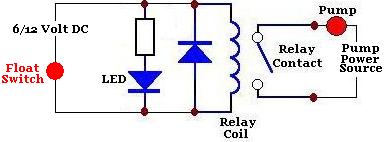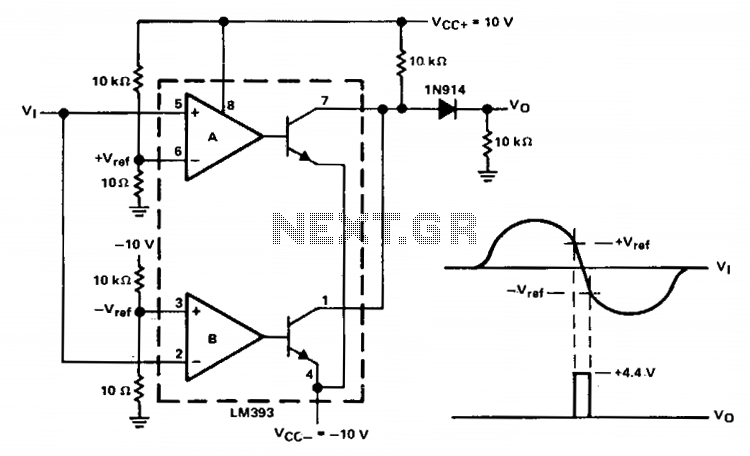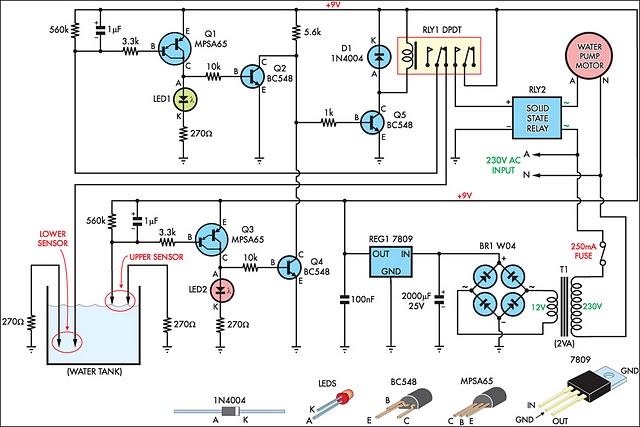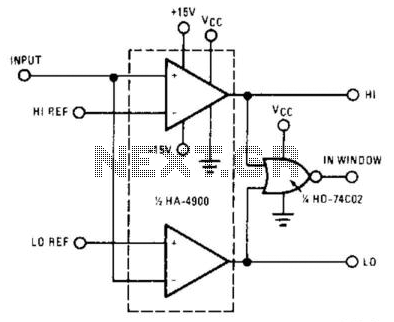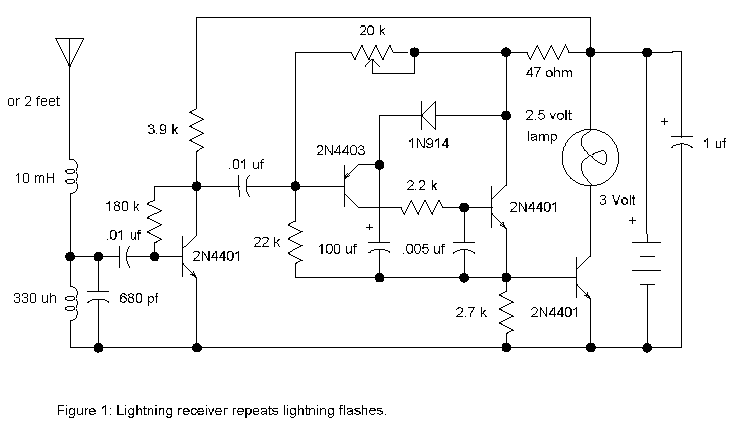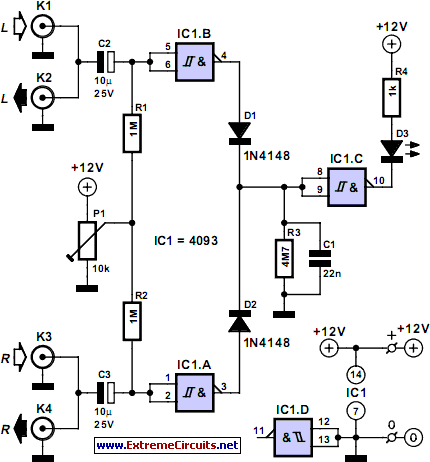
Water Detector with Buzzer
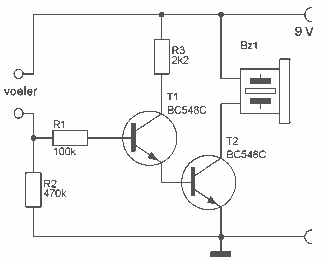
This is a simple circuit that can be used as a detector for water, such as a bath full detector. The terminals 'sensor' is connected to the probe. This may consist of two electrodes, or a PCB with surface adjacent tracks, the odd jobs with one socket, and the same with the other. If there is a noticeable drop, there is a running stream, so T1 and T2 are conducting. Bz1 gives a signal. The circuit must be powered for safety with a 9V battery, not with a power supply. The circuit can also be used for leaking washing machines. More: R1 = 100 kOhm R2 = 470 kOhm R1 = 2.2 kOhm T1, T2 = BC 548C Bz1 = buzzer
The described circuit operates as a water level detector, suitable for applications such as monitoring bath levels and detecting leaks in appliances like washing machines. The core functionality hinges on the use of two transistors (T1 and T2), specifically BC 548C, which are configured to amplify the signal received from the sensor probe.
The sensor probe is the critical component, comprising either two electrodes or a PCB designed with surface-mounted tracks. This arrangement allows for the detection of water presence by measuring the conductivity between the electrodes. When water bridges the gap between the electrodes, it creates a conductive path, triggering the transistors to turn on.
The circuit is powered by a 9V battery, which is essential for safety considerations, as it minimizes the risk associated with higher voltage power supplies in wet environments. The components include resistors R1 (100 kOhm) and R2 (470 kOhm), which are used to set the biasing conditions for the transistors. Additionally, there is a resistor of 2.2 kOhm, which is likely used for current limiting to protect the buzzer (Bz1) from excessive current when activated.
When the water level falls below a certain threshold, the conductivity between the electrodes decreases, causing T1 and T2 to conduct and activate the buzzer. The buzzer then emits a sound, alerting users to the water level condition. This simple yet effective design highlights the utility of basic electronic components in creating practical solutions for everyday problems related to water detection and management.This is a simple circuit that can be used as a detector for water, such as a bath full detector. The terminals 'sensor' is connected to the probe. This may consist of two electrodes, or a PCB with surface adjacent tracks, the odd jobs with one socket, and the same with the other. If there is a noticeable drop, there is a running stream, so T1 and T2 are conducting. Bz1 gives a signal. The circuit must be powered for safety with a 9V battery, not with a power supply. The circuit can also be used for leaking washing machines. R1 = 100 kOhm R2 = 470 kOhm R1 = 2.2 kOhm T1, T2 = BC 548C Bz1 = buzzer 🔗 External reference
The described circuit operates as a water level detector, suitable for applications such as monitoring bath levels and detecting leaks in appliances like washing machines. The core functionality hinges on the use of two transistors (T1 and T2), specifically BC 548C, which are configured to amplify the signal received from the sensor probe.
The sensor probe is the critical component, comprising either two electrodes or a PCB designed with surface-mounted tracks. This arrangement allows for the detection of water presence by measuring the conductivity between the electrodes. When water bridges the gap between the electrodes, it creates a conductive path, triggering the transistors to turn on.
The circuit is powered by a 9V battery, which is essential for safety considerations, as it minimizes the risk associated with higher voltage power supplies in wet environments. The components include resistors R1 (100 kOhm) and R2 (470 kOhm), which are used to set the biasing conditions for the transistors. Additionally, there is a resistor of 2.2 kOhm, which is likely used for current limiting to protect the buzzer (Bz1) from excessive current when activated.
When the water level falls below a certain threshold, the conductivity between the electrodes decreases, causing T1 and T2 to conduct and activate the buzzer. The buzzer then emits a sound, alerting users to the water level condition. This simple yet effective design highlights the utility of basic electronic components in creating practical solutions for everyday problems related to water detection and management.This is a simple circuit that can be used as a detector for water, such as a bath full detector. The terminals 'sensor' is connected to the probe. This may consist of two electrodes, or a PCB with surface adjacent tracks, the odd jobs with one socket, and the same with the other. If there is a noticeable drop, there is a running stream, so T1 and T2 are conducting. Bz1 gives a signal. The circuit must be powered for safety with a 9V battery, not with a power supply. The circuit can also be used for leaking washing machines. R1 = 100 kOhm R2 = 470 kOhm R1 = 2.2 kOhm T1, T2 = BC 548C Bz1 = buzzer 🔗 External reference
